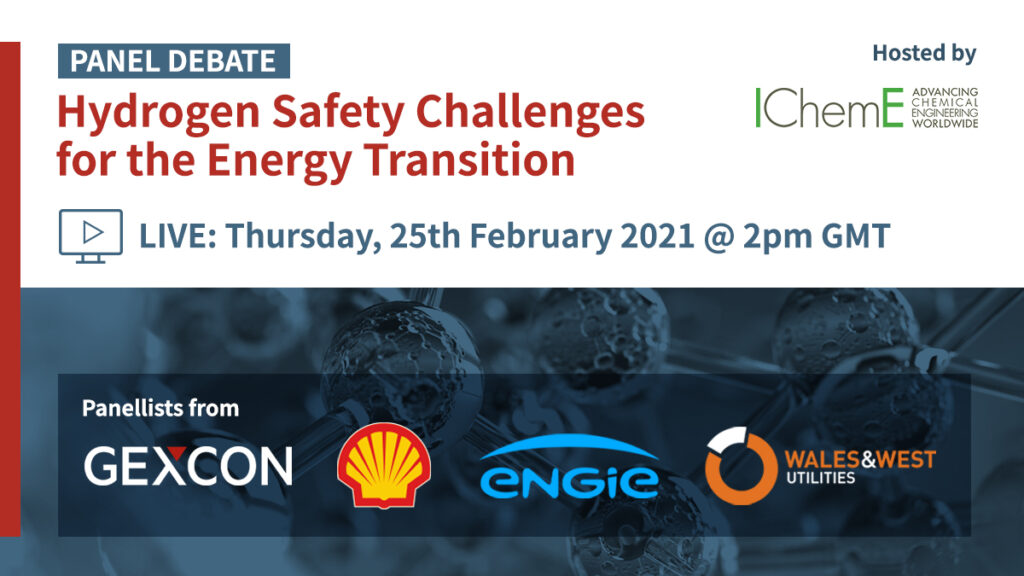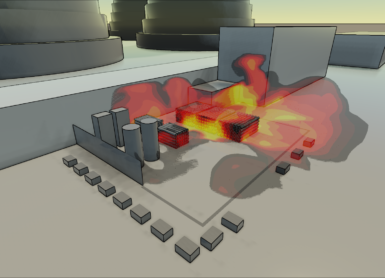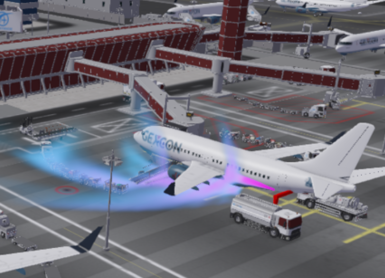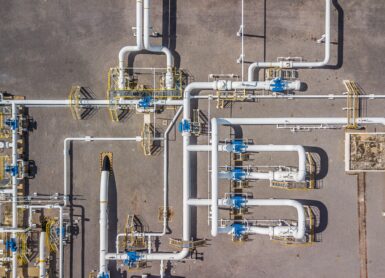
The growing interest in hydrogen in large volumes as an alternative fuel for a clean and sustainable energy future has led to a need to better understand hydrogen’s safety aspect, especially related to handling and use. Various research has been performed to address the safety challenges and build confidence that hydrogen is a safe fuel alternative.
As a part of the “Hydrogen Safety Challenges for the Energy Transition” panel debate, we are interviewing the panellists to know their thoughts on hydrogen safety challenges before the event.
Dr. Kees van Wingerden, Chief Technical Officer at Gexcon, has been involved in a research project related to hydrogen safety, focusing on the consequences of handling and use of large volumes of liquefied hydrogen within closed and semi-closed environments for maritime transport. In this interview, Dr. Kees explains his thoughts on the safety aspect of hydrogen as a fuel.

Q: What do you think of hydrogen as an alternative fuel compared to other commonly used fuels?
Dr. Kees: Hydrogen has a significant advantage because it doesn’t produce CO2 when burned. From this perspective, it is beneficial if hydrogen is utilised as fuel, either through fuel cells or internal combustion engines, when speaking about transportation means. However, we need to ensure that we can do this safely.
Q: What are your thoughts on the challenges that we need to address to ensure the safe handling and use of hydrogen as a fuel?
Dr. Kees: The challenges arise from hydrogen’s properties themselves.
If we look at gaseous hydrogen, it is easy to ignite, especially with electric or electrostatic sparks. You only need approximately 0.017 mJ to do this for mixtures with air, which is considered to be very low. In terms of the explosion, it has a wide explosive range and is also very reactive. Suppose there is an explosion where hydrogen is mixed with air and ignited. In that case, it burns very quickly and can cause high overpressures. If the explosion happens in a room with no obstructions/equipment inside, a large vent opening is needed to protect this room. If there are obstructions, flame speeds can be very high resulting in considerable overpressures, and there is potential for creating a transition to detonation.
Regarding fires, gaseous hydrogen flames do not radiate significantly, and they are partly invisible due to the absence of carbon. One can come close and still not feel the flame due to the low radiation. However, the temperatures of the flames are high.
Despite these dangerous properties, gaseous hydrogen also has some advantageous properties when considering safety. Because it is a very light gas, it will directly go up when released in the open and can hardly create a flammable cloud at the ground level. Therefore, we don’t need to worry about the ignition sources located there. Nonetheless, we need to be cautious if it’s released inside a room with no ventilation. Gaseous hydrogen can be trapped under the ceiling and explode if ignition sources are available in the ceiling area.
Hydrogen can also cause the embrittlement of metals due to the diffusion of hydrogen into the material. This can lead to cracking and therefore releases when the material is exposed to stress.
Q: Do you think the research project that you are involved in can answer the challenges you’ve mentioned?
Dr. Kees: Yes, specifically concerning the consequences of hazards related to the handling of liquefied hydrogen.
We address two questions in the research project.
The first is related to understanding the possibility and consequences of BLEVEs (Boiling Liquid Expanding Vapor Explosions) when storage vessels containing liquefied hydrogen are exposed to an external fire. BLEVEs are especially known as a phenomenon when vessels containing liquefied gasses, such as propane and butane, are caught in a fire. However, we still don’t know if BLEVEs are possible for storage vessels containing liquefied hydrogen and if possible, their effects. We perform tests using three tanks with different insulation materials and orientations to understand this phenomenon. If a BLEVE occurs, we will study the type and size of the fireballs, the overpressure generated, and the fragmentation of the storage vessels including the distances to which these fragments are propelled to.
The second is related to understanding the possibility and consequences of RPTs (Rapid Phase Transitions) when liquefied hydrogen is released onto water. It is known that when LNG is in contact with water, it will evaporate rapidly and can create strong blast waves. We would like to understand if this is also possible for liquefied hydrogen.
This research will help us understand potential consequences associated with hazards when storing and handling liquefied hydrogen. The findings will benefit the emergency services such as fire brigades to help them know what they are dealing with, hence performing the right actions. It will also help players in the hydrogen industry to implement the necessary safety measures.
Q: How do you see the prospects of hydrogen utilisation and Gexcon’s role in the safety aspect?
Dr. Kees: We have to understand all aspects of hydrogen that we haven’t figured out before utilising it fully as a fuel. I believe we can reach that level of understanding and work safely with hydrogen. But we have to always keep in mind to implement necessary safety measures. That should be the future. And Gexcon will help identify, prevent, and mitigate risks related to hydrogen to realise this future.

A more detailed discussion between Dr. Kees and the other experts from Shell, Engie and Wales & West Utilities was presented during the Hydrogen Safety Challenges for the Energy Transition panel debate. To request a replay, please click on the button below.
Do you like what you read?
Get the latest trends in the field of process safety management straight to your inbox, and enhance your skills through knowledge sharing from industry experts.


